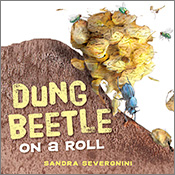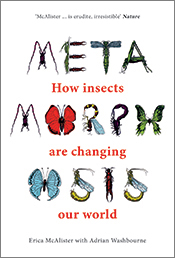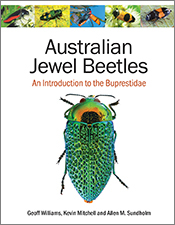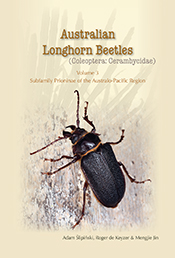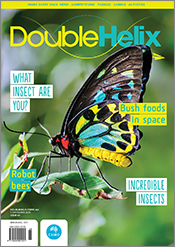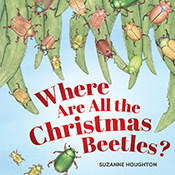Butterflies of Australia
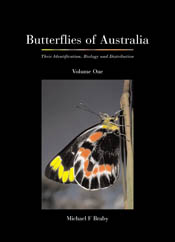
Their Identification, Biology and Distribution
By: Michael F BrabyRepresenting nearly 400 species, this outstanding work is the ultimate guide for the identification of Australia’s butterflies.
This outstanding work is the ultimate guide for the identification of Australia’s butterflies. Nearly 400 species – all those currently recognised from Australia, plus those from surrounding islands – are represented, with all adults and some immature stages displayed in stunning colour sections. + Full description
Introductory chapters cover the history of publications, classification, morphology, distribution, conservation and collection, together with a checklist of the butterfly fauna. The body of the text is arranged systematically, providing a wealth of information including description, variation, similar behaviour, distribution and habitat, and major literature references, giving a comprehensive summary of the present state of knowledge of these insects. Appendices provide details of those species recorded from Australian islands outside the Australian faunal subregion, those protected by legislation, the larval food plants, and the attendant ants. Extensive references, a glossary and an index of scientific and common names complete the work.
Joint Winner of the 2001 Whitley Medal.
Finalist Scholarly Reference section - The Australian Awards for Excellence in Educational Publishing 2001.
- Short descriptionNews
No longer available in a print edition.
Reviews
"Butterflies of Australia is an outstanding book; it is the culmination of a succession of excellent butterfly books following G.A. Waterhouse & G. Lyell (1914) and I.F.B. Common & D. F. Waterhouse (1972, 1981). It allows easy identification of all species and summarises all that we know about the Australian butterfly fauna. This work is the result of productive collaboration of many interested amateur and professional entomologists throughout Australia."
John Landy, Olympian, naturalist and Chair of the ANIC Fund Board
"In this new book on the butterflies of Australia, Michael Braby, with great support from members of the advisory panel, the editors, and the CSIRO project team, has done a magnificent job of bringing together all the essential current knowledge of Australian butterflies. The fact that two packed volumes are required to do justice to some 400 species is testament to the remarkable amount of information that now exists. More than half of the butterflies of Australia are found nowhere else on Earth. It is my earnest hope that this outstanding new book will help lay a more secure foundation for the active conservation and ultimate survival of all of Australia’s native butterflies."
Dick Vane-Wright, The Natural History Museum, London
"Butterflies are key organisms for the monitoring of biodiversity, and constitute an important system for testing scientific hypotheses in ecology, evolution, and animal behavior. The main reason they can play these important roles is that the widespread interest they attract has led to the publication of many books detailing their taxonomy and biology. This wonderful new volume on Australian butterflies could serve as a model for a new generation of books that will make butterflies an even more important tool for helping humanity understand and manage its crucial life-support systems."
Professor Paul R. Ehrlich, Stanford University
“Another indispensable Australian scientific work from the CSIRO.”
The Australian 4 October 2000
“This book will provide the foundation for all future research on Australian butterflies and their conservation.”
Malcolm Robertson (Geo September-November 2000)
“Michael Braby is to be congratulated for producing these two lavish new volumes on the butterflies on Australia that are smartly united by a single lycaenid on the spine. … This will be an important shelf reference for many years to come for anyone working on the Australasian fauna or interested in comprehensive modern reviews of butterflies in general.”
David Lees (Systematic Entomology 26, 2001)
“As befits a highly developed nation with a well-known butterfly fauna, this excellent work offers valuable information, richly illustrated and graphically clear and pleasing. … Compared to other lavishly illustrated butterfly books, this is a good value particularly for academic libraries.”
M Gochfeld, Robert Wood Johnson Medical School (CHOICE v.38 no.3, February 2001)
“Michael Braby and his technical advisors have done a fine job with this book. It includes a prodigious amount of detail, and is an essential resource for students of Australian butterflies.”
Peter Samson (Australian Journal of Entomology 40, 2001)
“This outstanding two volume work of Michael F. Braby is the most important definitive guide for the identification of all 397 recorded Australian butterflies. The author follows the best tradition of Australian research on Lepidoptera and has produced a magnificent piece of work of great general value. It is also a model book on the application of butterfly studies to habitat conservation and will be highly appreciated by entomologists and conservationists, not only in Australia.”
K Spitzer (European Journal of Entomology, 98 2001)
“This publication is wonderfully use-friendly, comprehensive and superb.”
Frank Jordan (Butterfly & Other Invertebrates Club Inc. Newsletter no.19 Dec 2000)
“In forty years of collecting and studying butterflies I have not had the pleasure of perusing a more aesthetically or scientifically pleasing book than this one.”
Mark C. Williams (Metamorphosis v.12 no.2 June 2001)
“This substantial work will be the standard Australian butterfly reference work for the foreseeable future. Combined with a particularly attractive layout and general appearance, it is difficult to see how anyone with an interest in butterflies can be without these two superb volumes.”
John Tennent (Antenna v.25 no.2 April 2001)
“I have no doubt that this work deserves a place on the bookshelf of everyone interested in the Australian butterfly fauna. For those actively involved with the subject it is something of a necessity.”
David L. Hancock (Australian Entomologist v.28 no.1 2001)
Details
ePDF | August 2000ISBN: 9780643100770
Publisher: CSIRO Publishing
Available from eRetailers
Features
- 70 pages of stunning colour plates
- authoritative introductory material covering collection and conservation
- illustrations of male and female for each species
- comprehensive coverage of description, habitat, life cycle and behaviour for each species
Contents
Volume IForeword
List of Figures
List of Tables
Acknowledgments
Preface
Aims and organisation
Presentation of species
Butterflies recorded from Australian islands outside the Australian faunal subregion
Identification of specimens
1. Introduction
- History
- Classification
- Morphology
- Geographic distribution, variation and species concepts
- Conservation
- Adults
- Immature stages
- Photography
- Entomological contacts
- Species and subspecies within the Australian faunal subregion
- Species and subspecies outside the Australian faunal subregion
4. Family Hesperiidae
- Subfamily Pyrginae
- Subfamily Coeliadinae
- Subfamily Trapezitinae
- Subfamily Hesperiinae
5. Family Papilionidae
- Subfamily Papilioninae
6. Family Pieridae
- Subfamily Coliadinae
- Subfamily Pierinae
Colour Plates
- 1–18. Hesperiidae
- 19–23. Papilionidae
- 24–28. Pieridae
- 29–41. Nymphalidae
- 42–63. Lycaenidae
- 64. Species outside the Australian faunal subregion
- 65. Eggs and adults (all families)
- 66. Adults (Pieridae, Nymphalidae, Lycaenidae)
- 67. Larvae and pupae (Hesperiidae)
- 68. Larvae and pupae (Papilionidae, Pieridae)
- 69. Larvae and pupae (Nymphalidae)
- 70. Larvae and pupae (Lycaenidae)
- Label data of specimens figured in colour plates 1–64
Volume II
7. Family Nymphalidae
- Subfamily Amathusinae
- Subfamily Satyrinae
- Subfamily Charaxinae
- Subfamily Apaturinae
- Subfamily Acraeinae
- Subfamily Heliconiinae
- Subfamily Argynninae
- Subfamily Limenitiinae
- Subfamily Nymphalinae
- Subfamily Libytheinae
- Subfamily Danainae
- Subfamily Tellervinae
8. Family Lycaenidae
- Subfamily Liphyrinae
- Subfamily Theclinae
- Subfamily Polyommatinae
- Subfamily Riodininae
Appendix I. Butterfly species and subspecies recorded from Australian islands but not from the Australian faunal subregion
Appendix II. Butterflies recorded from Australian islands outside the Australian faunal subregion
Appendix III. Australian butterflies considered by the author to be of conservation concern
Appendix IV. Australian butterflies protected by legislation
Appendix V. Reference list of larval food plants
Appendix VI. List of attendant ants
Glossary
References
Index of Scientific and Common Names

